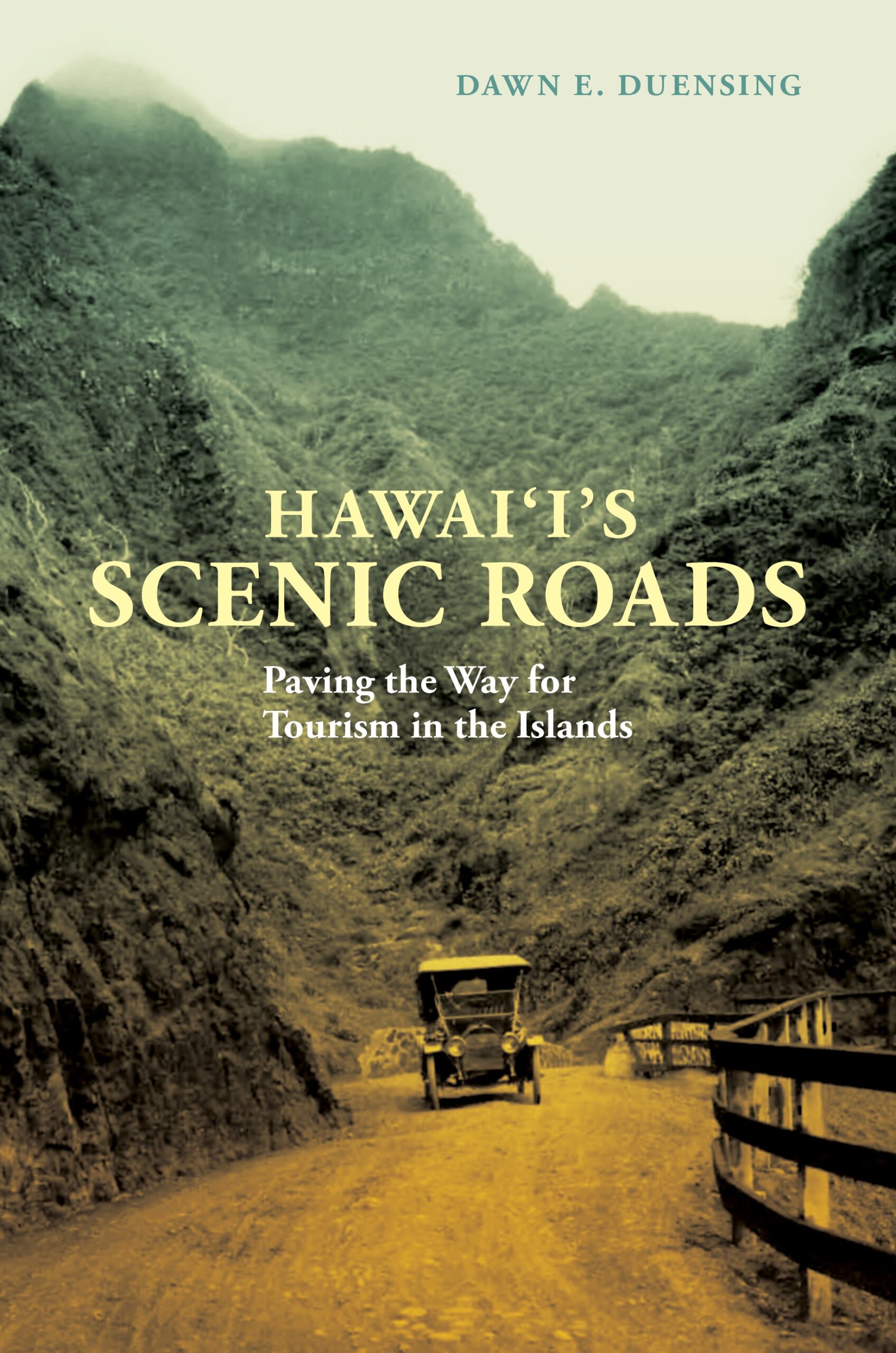Hawai‘i’s Scenic Roads: Paving the Way for Tourism in the Islands
- About the Book
-
Hawai‘i’s Scenic Roads examines a century of overland transportation from the Kingdom’s first constitutional government until World War II, discovering how roads in the world’s most isolated archipelago rivaled those on the U.S. mainland. Building Hawai‘i’s roads was no easy feat, as engineers confronted a unique combination of circumstances: extreme isolation, mountainous topography, torrential rains, deserts, volcanic eruptions, earthquakes, and on Haleakalā, freezing temperatures.
By investigating the politics and social processes that facilitated road projects, this study explains that foreign settlers wanted roads to “civilize” the Hawaiians and promote western economic development, specifically agriculture. Once sugar became the dominant driver in the economy, civic and political leaders turned their attention to constructing scenic roads. Viewed as “commercial enterprises,” scenic byways became an essential factor in establishing tourism as Hawai‘i’s “third crop” after sugar and pineapple. These thoroughfares also served as playgrounds for the islands’ elite residents and wealthy visitors who could afford the luxury of carriage driving, and after 1900, motorcars.
Duensing’s provocative analysis of the 1924 Hawai‘i Bill of Rights reveals that roads played a critical role in redefining the Territory of Hawai‘i’s status within the United States. Politicians and civic leaders focused on highway funding to argue that Hawai‘i was an “integral part of the Union,” thus entitled to be treated as if it were a state. By accepting this “Bill of Rights,” Congress confirmed the territory’s claim to access federal programs, especially highway aid. Washington’s subsequent involvement in Hawaii increased, as did the islands’ dependence on the national government. Federal money helped the territory weather the Great Depression as it became enmeshed in New Deal programs and philosophy. Although primarily an economic protest, the Hawai‘i Bill of Rights was a crucial stepping stone on the path to eventual statehood in 1959.
The core of this book is the intriguing tales of road projects that established the islands’ most renowned scenic drives, including the Pali Highway, byways around Kīlauea Volcano, Haleakalā Highway, and the Hāna Belt Road. The author’s unique approach provides a fascinating perspective for understanding Hawai‘i’s social dynamics, as well as its political, environmental, and economic history.
- About the Author(s)
-
Dawn E. Duensing, Author
Dawn Duensing lived on Maui for seventeen years, working as an independent historian and historic preservation consultant on projects throughout the islands. She taught history at Maui Community College and spent four summers researching and documenting historic roads for the Historic American Engineering Service, a division of the U.S. National Park Service. In 2004 Duensing received a Historic Hawaiʻi Foundation Preservation Honor Award for her role in helping preserve Maui’s Hāna Belt Road. She has served on the Maui County Cultural Resources Commission, the State of Hawaiʻi Historic Places Review Board, and the National Trust for Historic Preservation advisory board. She earned a PhD in history from The Australian National University and is currently based in England.
- Reviews and Endorsements
-
- Duensing has crafted a detailed, valuable history of how roads came to be built in a challenging island environment with volcanoes, mountains, geographic separation, variable weather conditions, and a scarcity of money.
—CHOICE - As both an engaging read and a prime example of scholarship, “Hawaii’s Scenic Roads: paving the Way for Tourism in the Islands: will find avid readers among historians, engineers, urban planners and makers of public policy, particularly with regard to transportation. It will also appeal to those many local residents with a persistent desire to understand how pre-World War II Hawaii evolved into the American state it is today.
—Honolulu Star Advertiser - Hawai‘i’s Scenic Roads is not just a narrowly constructed story about overcoming the formidable engineering challenges of the mountainous and hilly topography, jagged coastlines, highly variable and sometimes torrentially rainy weather patterns, active volcanoes, and frequent earthquakes. Instead, Duensing also adds a host of nuanced layers to her narrative, melding the technical and planning history with a parallel analysis of the politics and social processes of modernization, connecting the history of the islands’ infrastructure to their economic and political histories. . . . [The book] contributes to our understanding of the local implications of U.S. variants of colonialism, and of postcolonial structural transitions during the twentieth century. Last, but certainly not least, it is an excellent and illustrative longitudinal case study of federal-local government relations and their on-the-ground manifestations.
—Owen Gutfreund, Hunter College, CUNY, American Historical Review - [Duensing’s] passionate and learned commitment has resulted in the previously uncovered topic of Hawaii’s road history in this volume that will likely emerge a classic.
—Journal of the West
- Duensing has crafted a detailed, valuable history of how roads came to be built in a challenging island environment with volcanoes, mountains, geographic separation, variable weather conditions, and a scarcity of money.
- Supporting Resources
-





